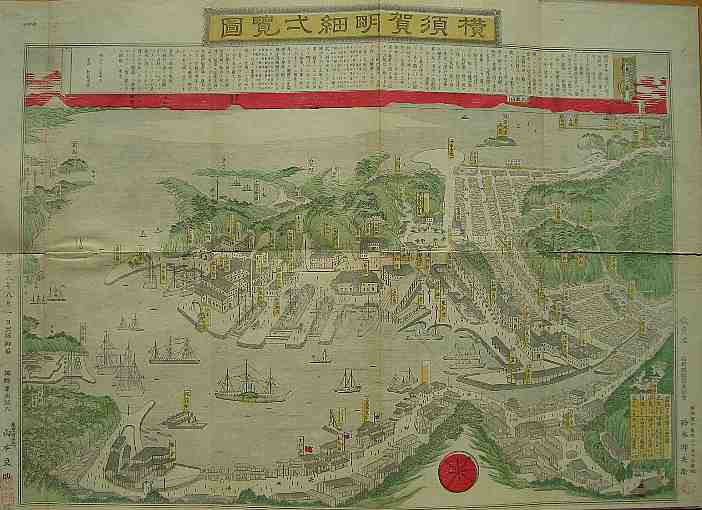▼「日本の近代工学のいっさいの源泉」(司馬遼太郎『街道を行くー三浦半島記』)となった横須賀造船所 Yokosuka Shipyard, "the source of all the Japan's modern engineering" (Ryotaro Shiba wrote in his work, "Kaido-wo iku - Miura Peninsula Chronicles").  |
|
◇将軍の出座はなし
By the way, Mr. Hiroyuki Yasuike, curator of the Yokosuka Museum of Nature and Humanities, who investigated "August 20, Bunkyu 2", the day when Kaishu Katsu opposed the construction of the shipyard with his theory of 500 years needed for the Navy, revealed that the article on this day is unreliable (The Museum Bulletin, No. 48, 2004). For example, according to the diary of Tadakiyo Mizuno, a roju (chief senior councilor of the Shogunate), the shogun Iemochi Tokugawa was not present on that day, and no kakuro (senior advisors) were summoned either. Mr. Yasuike said, "The fact that no one, including the kakuro, was summoned to the Shogun's presence on that day in the diary of Mizuno, who wrote detailed accounts of the Shogun's movements on other days, is evidence that the description in 'Kaishu Diary' itself is an erroneous account." ◇日記の虚構 If the articles in the diary are erroneous, I wonder if “Navy needs 500 years” theory supposedly written by Kaishu Katsu is not his opinion, or is it still his opinion? Diaries left by those who are called the "Elder statesmen of the Meiji era" are often cited as valuable historical documents at the end of the Edo period and at the time of the Meiji Restoration. However, it is said that in some cases they wrote their diaries with exaggeration, self-assertion, and self-defense, taking pride in the fact that they were now engaged in important historical work and that their diaries would later be made public. If the "Kaishu Diary," which often contains boasts and exaggerations, is also subject to this kind of artifice, we need to read it with great caution. October 2005 or Heisei 17 |